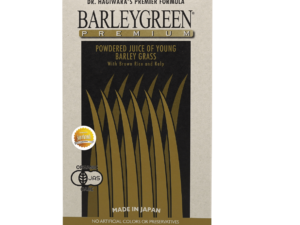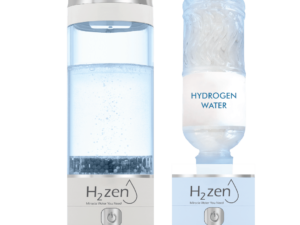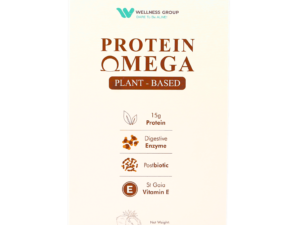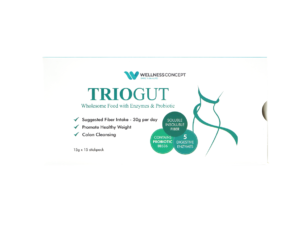Hydrogen Water for Cellular Hydration: Wellness Group Malaysia
Did you know a modest dose of dissolved H2 can cross the blood-brain barrier? That surprising fact shows why many Malaysians are curious about how enhanced drinks may support everyday wellness.
Wellness Group offers friendly guidance on this topic and helps people sort claims from science. The group explains how modest levels of molecular H2—often around 0.5 ppm—can act as a selective antioxidant and reach tissues fast.
The guide outlines what differs between plain supplies and enriched options, why packaging matters, and how dissolved gas retention affects efficacy. It also previews evidence: small human studies point to possible benefits, while urging a cautious, science-informed view.
Readers in Malaysia can reach Wellness Group on WhatsApp at +60123822655. Business hours are Monday-Friday 9:30 am–6:30 pm and Saturday-Sunday 10 am–5 pm for product and usage clarity.
Key Takeaways
- Enriched drinks contain bioavailable molecular H2 that moves quickly into tissues.
- Therapeutic DH starts near 0.5 ppm and negative ORP suggests antioxidant potential.
- Packaging in sealed pouches or pressurized cans helps keep the gas effective.
- Small studies show possible health gains, but readers should weigh evidence carefully.
- Wellness Group offers local support—contact via WhatsApp during listed hours.
What is Hydrogen Water and Why It Matters in Malaysia Today
By introducing dissolved H2 gas into pure liquid, makers hope to give consumers an accessible source of free molecules distinct from the hydrogen already tied to oxygen.
Hydrogen water is created when molecular hydrogen is infused into purified liquid so that free H2 is available to the body. This differs from the hydrogen bound in H2O, which is not the same as added gas.
Interest in this beverage is growing in Malaysia because people focus more on preventive health. Heat and humidity raise oxidative stress risk, and many seek natural tools that may help.
How it may work: researchers propose selective antioxidant action. Free H2 targets harmful radicals without blocking useful signaling molecules, which may support redox balance.
“Small human studies suggest reduced oxidative stress and modest performance gains, but evidence is still early and product concentrations vary.”
Practical tips: choose sealed cans or pouches and drink soon after opening to keep gas levels high. An informed choice matters when assessing the purported health benefits.
| Packed Type | Retention | Consumer Tip |
|---|---|---|
| Aluminum can | High short-term retention | Chill and consume quickly |
| Foil pouch | Good if sealed | Store cool, finish after opening |
| Plastic bottle | Lower retention | Prefer other choices in hot climates |
The Science Behind Hydrogen-Rich Water
Modern research examines how small doses of dissolved H2 act at the biochemical level to help reduce damage from the most reactive species. This section distills key chemistry and how the molecules move through the body.
Molecular Hydrogen as a Selective Antioxidant
Molecular hydrogen targets highly reactive hydroxyl radicals while sparing useful signaling oxidants like nitric oxide. This selective action may support redox balance without blocking normal cell signals.
Chemistry Essentials: DH (ppm), ORP, pH, and Solubility
Therapeutic dissolved levels often range near 0.5–1.6 ppm. Negative ORP values (commonly -200 to -600 mV) are used as a proxy for antioxidant potential. pH usually stays near neutral, and solubility limits explain why sealed packaging matters.
How Molecules Reach Cells, Mitochondria, and the Brain
Small, neutral H2 diffuses quickly across membranes. It can reach mitochondria and distribute systemically, which explains rapid yet transient effects seen in some studies.
Methods of Infusion
- Electrolysis: splits liquid into H2 and O2; good control but needs equipment.
- Magnesium reaction: simple tablets produce H2 and magnesium hydroxide.
- High-pressure sealing: preserves dissolved gas best when packaging is airtight.
“Packaging and timely consumption are essential to preserve dissolved levels and deliver intended benefits.”
For practical guidance on product choice and retention, read the Wellness Group’s detailed guide on hydrogen water for cleansing.
Evidence-Based Benefits: From Oxidative Stress to Everyday Wellness
Small clinical studies report measurable drops in oxidative damage after daily intake of enriched beverages.
Reducing oxidative stress and free radical damage
Trials suggest that regular intake can lower markers tied to free radicals. In an 8-week study of 49 liver cancer patients, 1.5–2.0 L/day reduced hydroperoxide levels and helped preserve antioxidant activity during radiation.
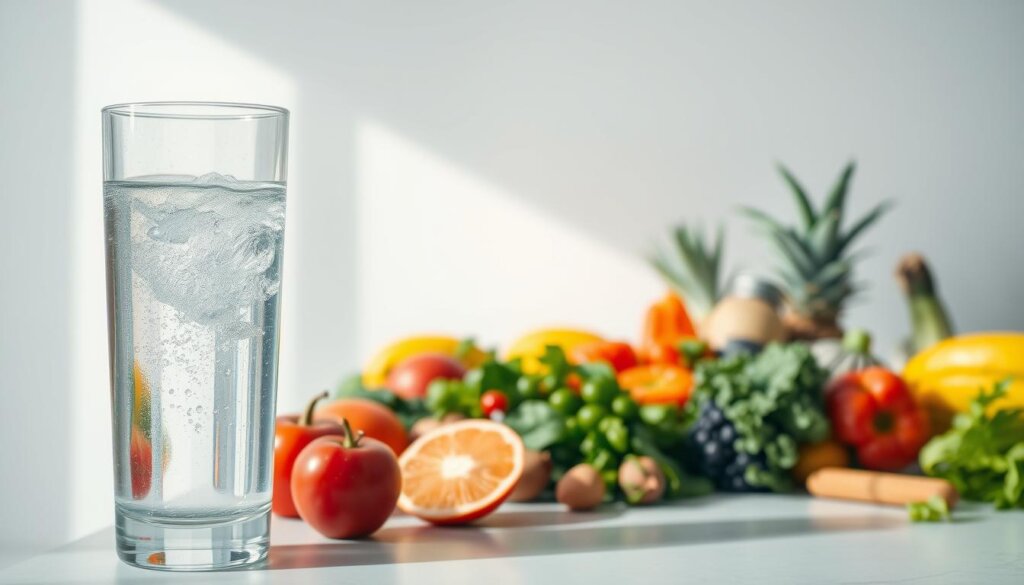
Inflammation, redox balance, and cellular protection
A 10-week trial in people with metabolic syndrome (0.9–1.0 L/day) showed lower TNF-α and improved HDL. These shifts hint that modest modulation of redox signaling can ease chronic inflammation while leaving normal cell signaling intact.
Skin health and barrier support from within
Less oxidative strain may help skin turnover and barrier resilience. Early reports connect reduced radicals with improved signs of skin recovery after environmental stress.
Metabolic markers: lipids, antioxidant activity, and early findings
Small studies report drops in LDL and total cholesterol, higher HDL, and boosted antioxidant activity. Athletic trials also note lower lactate, less perceived muscle fatigue, and occasional short-term gains in sprint power.
| Outcome | Study Type | Reported Change |
|---|---|---|
| Oxidative markers | Radiation patients, 8 weeks | Reduced hydroperoxides; preserved antioxidant activity |
| Lipids & inflammation | Metabolic syndrome, 10 weeks | Lower LDL/total cholesterol; higher HDL; reduced TNF-α |
| Exercise recovery | Soccer players & cyclists | Lower blood lactate; less fatigue; improved sprint power |
“Early human results are promising, but larger trials are needed to confirm magnitude and consistency.”
Hydrogen water for cellular hydration
Fast diffusion of tiny molecules can help membrane channels move fluids into tight tissue spaces. This makes a difference during long workdays, training, or travel in Malaysia’s heat.
Aquaporins, intracellular fluids, and faster membrane diffusion
Small neutral gas molecules diffuse quickly and may interact with aquaporins to ease fluid shifts into cells. That could speed intracellular refilling after sweating or exertion.
Hydration under heat and exercise: holding electrolyte balance
Maintaining plasma osmolality is key to comfort, focus, and performance. Some reports link dissolved gas intake to steadier osmotic levels and less electrolyte disruption during long heat exposure.
Why hydrogen water may outperform regular water at the cell level
It may support faster intracellular uptake while regular water often stays mainly in the extracellular space until gradients change. Still, total intake and electrolytes matter most.
Practical tips: sip steadily in hot conditions, pair fluids with balanced electrolytes, and time intake around activity to keep levels stable.
Sports and Recovery: Performance, DOMS, and Endurance
Smart fluid choices may shave minutes off recovery and help athletes train harder the next day.
Small studies in athletes report that about 1.5 L of enriched beverage reduced blood lactate and eased perceived muscle fatigue after hard sessions.
Another trial found 2 L/day over two weeks improved sprint power. These results suggest real, practical benefits for runners, cyclists, and field players.
Mitochondrial Support During High-Intensity Effort
Molecular hydrogen may help protect mitochondria from oxidative stress that builds during repeated sprints and heavy lifts.
This protection can help maintain energy output across intervals and reduce early fatigue during blocks of intense work.
When to Drink: Pre-, Intra-, and Post-Workout Timing Tips
Timing matters: drink a serving 30–60 minutes before hard training to aid endurance.
Sip modest amounts during long efforts in Malaysia’s heat to improve comfort and steady electrolytes.
Consume another serving within 30–60 minutes after exercise to help clear lactate and reduce delayed onset muscle soreness (DOMS).
“Athletes should favor regular, moderate dosing rather than one large serving to sustain benefits and reduce muscle fatigue.”
- Runners & cyclists: pre-workout + intra on long rides; pair with electrolytes.
- Lifters: pre-session and immediate post-session with protein for repair.
- Court athletes: sip before matches and during breaks to keep performance steady.
| Use Case | Typical Dose | Reported Result |
|---|---|---|
| Endurance events | ~1.5 L pre/intra | Lower lactate; steadier effort |
| Sprint training | 2 L/day over 2 weeks | Improved sprint power |
| Strength & recovery | Serve within 30–60 min post | Less muscle soreness; faster turnover |
Safety, Myths, and What Research Says Right Now
Safety and realistic expectations matter more than marketing when people evaluate enriched beverages. Regulatory authorities list added gas as generally recognized as safe (GRAS). The body expels it via lungs and urine, so it does not build up.
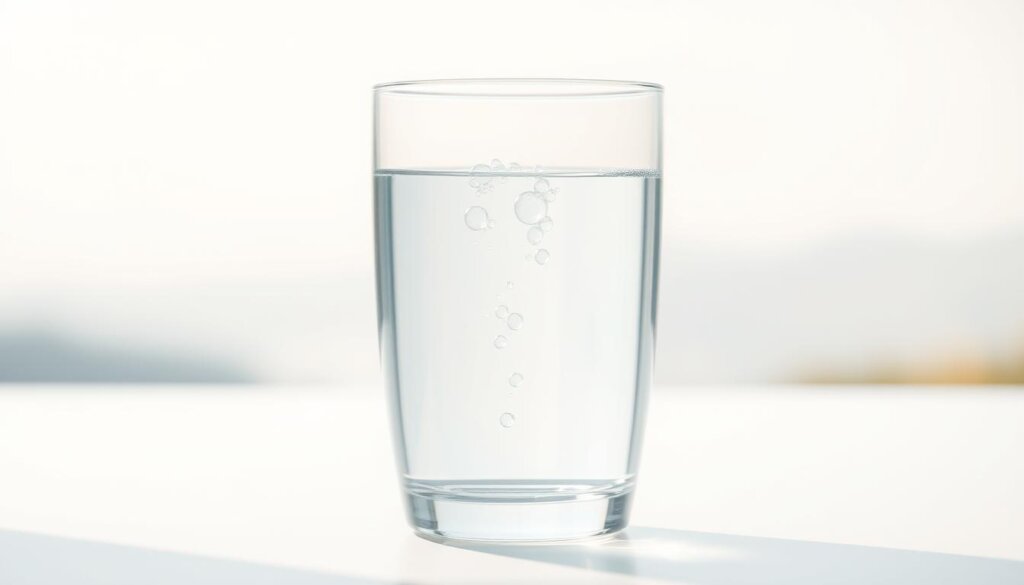
GRAS status and dosing realities: There is no industry standard for concentration. Many products list ppm, and therapeutic effects often begin near 0.5–1.6 ppm. Drinking soon after opening helps preserve levels.
Common misconceptions: Added gas is not the same as alkaline pH. Changing pH is a different approach than supplying dissolved gas. Also, higher concentration is not always better; modest, consistent intake usually suffices.
Evidence and cautious advice: Small studies show promising antioxidant effects and reduced oxidative stress. Larger trials are needed. Readers should treat marketing claims skeptically and choose sealed, non-permeable packaging and verified ppm ranges.
For specific guidance in pregnancy, see the Wellness Group’s pregnancy guidance.
Choosing and Using Hydrogen Water in Malaysia
Choosing the right packaging and routine has a big impact on how well enriched drinks keep their dissolved gas and deliver benefits.
Packing and storage: prefer pressurized cans or aluminum pouches. These limit gas escape and keep tested levels stable. Store products cool and drink soon after opening to capture intended potency.
Packed formats and retention
Cans offer the best short-term retention. Foil pouches follow closely when sealed properly. Plastic bottles lose dissolved gas faster in heat.
Target concentration
Look for verified DH near 0.5–1.6 ppm and ORP data when available. Buyers should favor brands that publish test results or third-party verification of levels.
Generators, tablets, and ready-to-drink options
Generators (electrolysis) suit people who want on-demand fills. Tablets are portable and can yield quick rises in ppm via a magnesium reaction. Ready-to-drink items are most convenient but must be consumed quickly.
Daily integration to see results
Build a simple routine: a morning serving, one before exercise, and another after long heat exposure. Sip steadily rather than gulping to maintain steady plasma balance.
| Format | Pros | Cons |
|---|---|---|
| Pressurized can | High retention; consistent levels | Less portable; must chill |
| Aluminum pouch | Good shelf life; lighter | Requires careful sealing after opening |
| Generator | On-demand; eco-friendly | Higher upfront cost; needs power |
| Tablet | Portable; easy dosing | Short-lived peak levels; byproducts to consider |
Need help choosing? Wellness Group guides people in Malaysia to select high-quality hydrogen water products that match lifestyle and goals. Contact via WhatsApp at +60123822655.
“The team offers tailored recommendations and support during business hours.”
Business hours: Monday–Friday 9:30 am–6:30 pm; Saturday–Sunday 10 am–5 pm.
Connect with Wellness Group Malaysia
Wellness Group makes it easy to get quick, practical help selecting high-quality hydrogen water options suited to Malaysia’s heat and routines.
WhatsApp: +60123822655
Business Hours:
- Monday–Friday: 9:30 am–6:30 pm
- Saturday–Sunday: 10:00 am–5:00 pm
The team matches packaging types (aluminum pouches, cans), generation methods (electrolysis units, magnesium tablets), and dosing tips to individual goals like sports recovery, daily wellness, or skin support.
“Message us on WhatsApp for answers about ppm targets, availability, and which formats hold potency in Malaysia’s climate.”
| Service | What they help with | Quick result |
|---|---|---|
| Product matching | Compare cans, pouches, tablets, generators | Best format for heat and storage |
| Label decoding | Explain ppm, ORP, and shelf advice | Clear buying choice |
| Routine planning | Timing, dose, and storage tips | Sustainable results |
Need tailored advice? Message +60123822655 during business hours and the team will suggest products and routines that match lifestyle and health goals.
Conclusion
Modest, consistent use and smart packaging choices give the best chance to capture benefits. Modest daily servings of hydrogen water, kept in sealed cans or foil pouches and consumed soon after opening, help preserve dissolved levels and the intended antioxidant action against oxidative stress.
Readers should target verified DH ranges (about 0.5–1.6 ppm), favor non‑permeable packaging, and build simple routines that match Malaysia’s climate and activity patterns. Expect modest benefits, not miracles, and watch results over weeks rather than days.
Need help choosing a product or timing? Contact Wellness Group Malaysia on WhatsApp at +60123822655 for local guidance and tailored advice.
FAQ
What is hydrogen-rich water and why does it matter in Malaysia today?
It is plain drinking liquid infused with molecular hydrogen gas to offer antioxidant effects. People in Malaysia seek it for added protection against oxidative stress, improved recovery after exercise, and daily wellness support, especially in hot, humid climates where cellular balance and electrolyte management matter.
How does molecular hydrogen act as an antioxidant?
Tiny hydrogen molecules selectively neutralize harmful free radicals like hydroxyl radicals while leaving useful reactive species untouched. This selective activity helps reduce oxidative damage inside cells and supports normal redox signaling without shutting down essential metabolic processes.
What do DH (ppm), ORP, and pH mean and which matter most?
DH (dissolved hydrogen in ppm) indicates gas concentration; ORP (oxidation-reduction potential) reflects reducing capacity; pH shows acidity. For therapeutic effects, dissolved hydrogen (around 0.5–1.6 ppm) and a reduced ORP are the primary quality markers, while pH plays a minor role in benefits.
Can hydrogen molecules actually reach cells, mitochondria, and the brain?
Yes. Molecular hydrogen is extremely small and diffuses quickly across membranes, reaching intracellular spaces and organelles like mitochondria. Some research suggests it crosses the blood–brain barrier, allowing it to influence neural oxidative stress and inflammation.
What methods produce high-quality infused drinks?
Common methods include electrolysis, magnesium-based reactions that release gas, and high-pressure sealing techniques used in cans or aluminum pouches. Each has trade-offs in concentration, retention, and convenience; sealed packaging retains gas best for ready-to-drink options.
What benefits does evidence suggest for oxidative stress and inflammation?
Studies indicate reduced markers of oxidative damage, lower inflammatory cytokines in some populations, and improved antioxidant enzyme activity. Results vary by dose, timing, and individual health status, but overall findings point toward protective cellular effects.
Could this beverage help skin health and barrier function?
Early research and clinical observations suggest improvements in skin antioxidant status and reduced inflammation, which may support barrier integrity and a healthier appearance when used consistently as part of a skincare-supporting routine.
Are there measurable metabolic benefits like lipid or antioxidant marker changes?
Some trials report modest improvements in lipid profiles, antioxidant activity, and metabolic markers in targeted groups. More large-scale, long-term studies are needed, but initial data are promising for metabolic adjunctive support.
How does this product affect cellular hydration and membrane diffusion?
Molecular hydrogen may enhance membrane permeability and work with aquaporin channels to improve intracellular fluid uptake. That can translate to faster cellular rebalancing after heat exposure or exertion compared with plain drinking liquids.
Does it improve hydration during exercise and help maintain electrolytes?
It can aid fluid distribution at the cellular level and support recovery from heat stress. It does not replace electrolytes; combining it with appropriate electrolyte intake yields the best results for performance and thermoregulation.
How does it compare to regular drinking liquids for cell-level rehydration?
Due to rapid diffusion and antioxidant activity, it may outperform plain fluids in cellular recovery and oxidative stress reduction. However, results depend on concentration, timing, and overall intake strategy.
Can athletes expect faster recovery, reduced soreness, or performance gains?
Research in sports contexts shows potential reductions in muscle fatigue, lactate buildup, and delayed-onset soreness for some athletes. Benefits are typically adjunctive — best when combined with proper training, nutrition, and rest.
When should people drink it around workouts?
Practical timing includes pre-exercise to prime cells, intra-workout for ongoing support, and post-exercise for recovery. Dosing strategies vary; consistent intake across sessions often produces the clearest effects.
Is it safe and are there dosing guidelines?
Molecular hydrogen has GRAS status in many regions and shows a wide safety margin in studies. Typical effective ranges in research cluster around 0.5–1.6 ppm. Users should follow product instructions and consult a healthcare professional for medical conditions.
What common misconceptions should people avoid?
Misunderstandings include conflating alkaline claims with molecular effects and assuming “more gas equals more benefit.” Quality, retention, and appropriate dosing matter more than marketing buzz about extreme figures.
How should products be stored to retain dissolved gas?
Sealed cans and aluminum pouches retain gas best. Avoid prolonged storage in open containers or hot environments. Consume within the manufacturer’s recommended window after opening for maximum concentration.
What delivery options exist and what are their pros and cons?
Options include ready-to-drink cans, tablets that react to release gas, and at-home generators. Cans offer convenience and retention; tablets are portable and inexpensive; generators provide on-demand concentration but require maintenance and time.
What target concentration should consumers look for?
Aim for products that list dissolved gas roughly between 0.5 and 1.6 ppm, which aligns with many clinical studies suggesting therapeutic benefit while remaining practical for retail products.
How can someone integrate it into daily routines for noticeable results?
Regular, consistent intake—such as morning and around workouts—along with good sleep, nutrition, and hydration habits helps reveal effects. Track subjective recovery, skin condition, and energy to assess personal responses.
How can people contact Wellness Group Malaysia for product guidance?
They can reach out via WhatsApp at +60123822655 during business hours for personalized recommendations and quality product guidance.
What are Wellness Group Malaysia’s business hours?
Business hours are Monday–Friday 9:30 am–6:30 pm and Saturday–Sunday 10:00 am–5:00 pm for customer support and consultations.

Khloe Tan
Khloe Tan is a Certified Nutritionist, Corporate Wellness Trainer, and Holistic Health Specialist with over 15 years of experience in the health and wellness industry. She has delivered more than 100 talks nationwide, inspiring and educating diverse audiences on nutrition, lifestyle, and sustainable wellness. Her work has positively impacted over 3,000 lives, and she continues to champion holistic approaches to well-being in both corporate and personal settings.
Feature Product
-
Hydrogen Water FIlter/Generator
H2zen Portable (White/ Blue)
RM2,600.00 Add to cart Buy NowRated 0 out of 5
